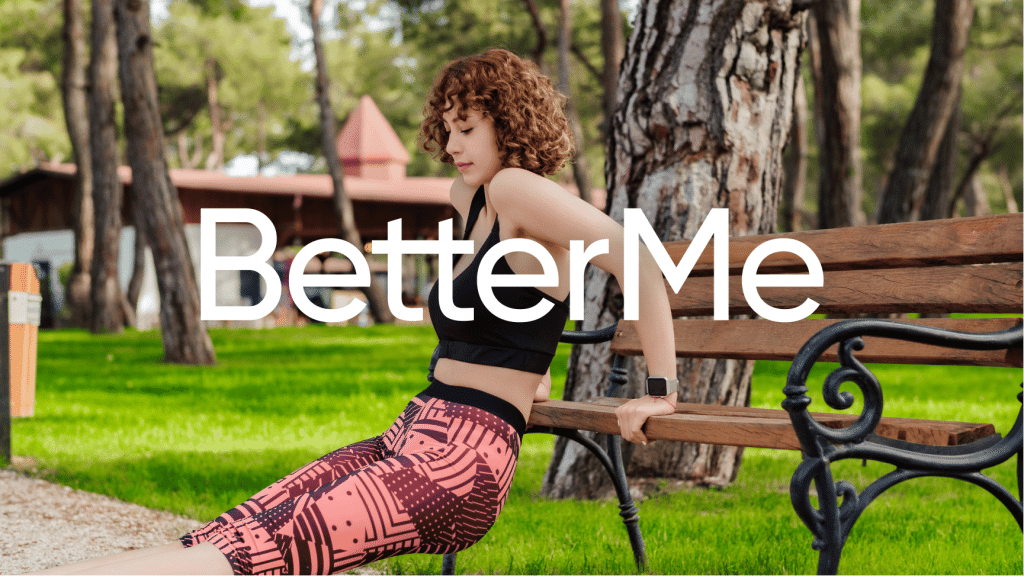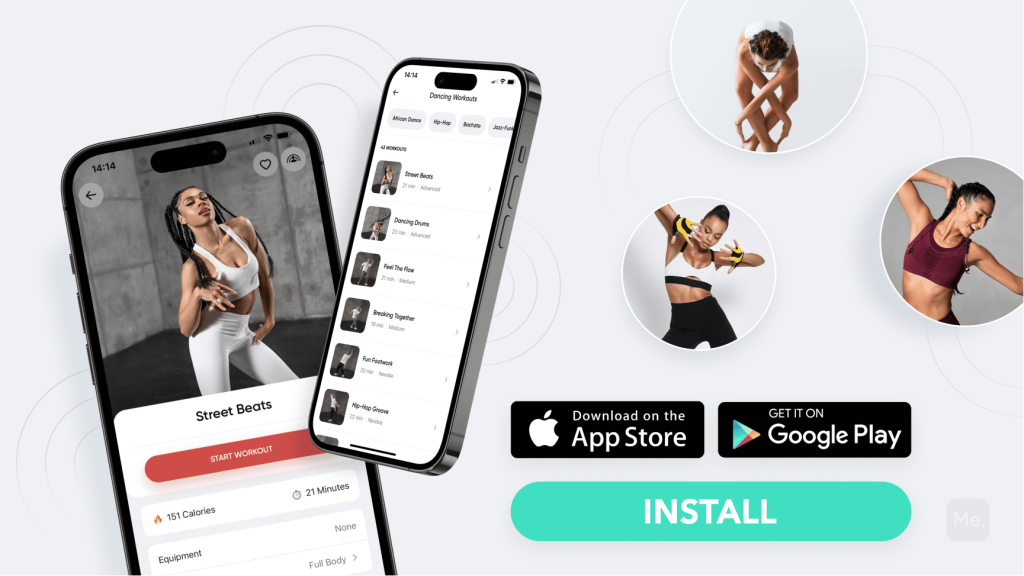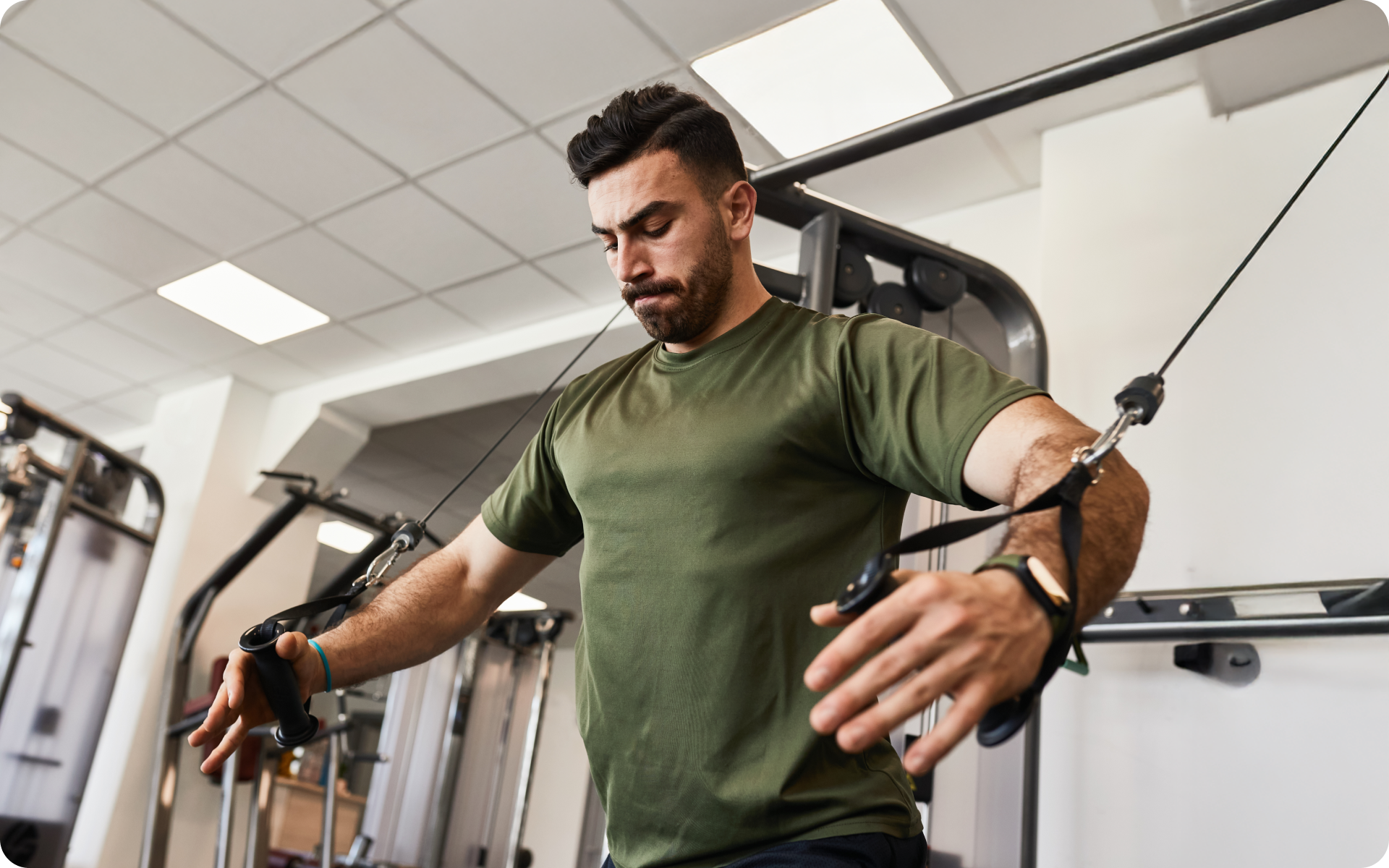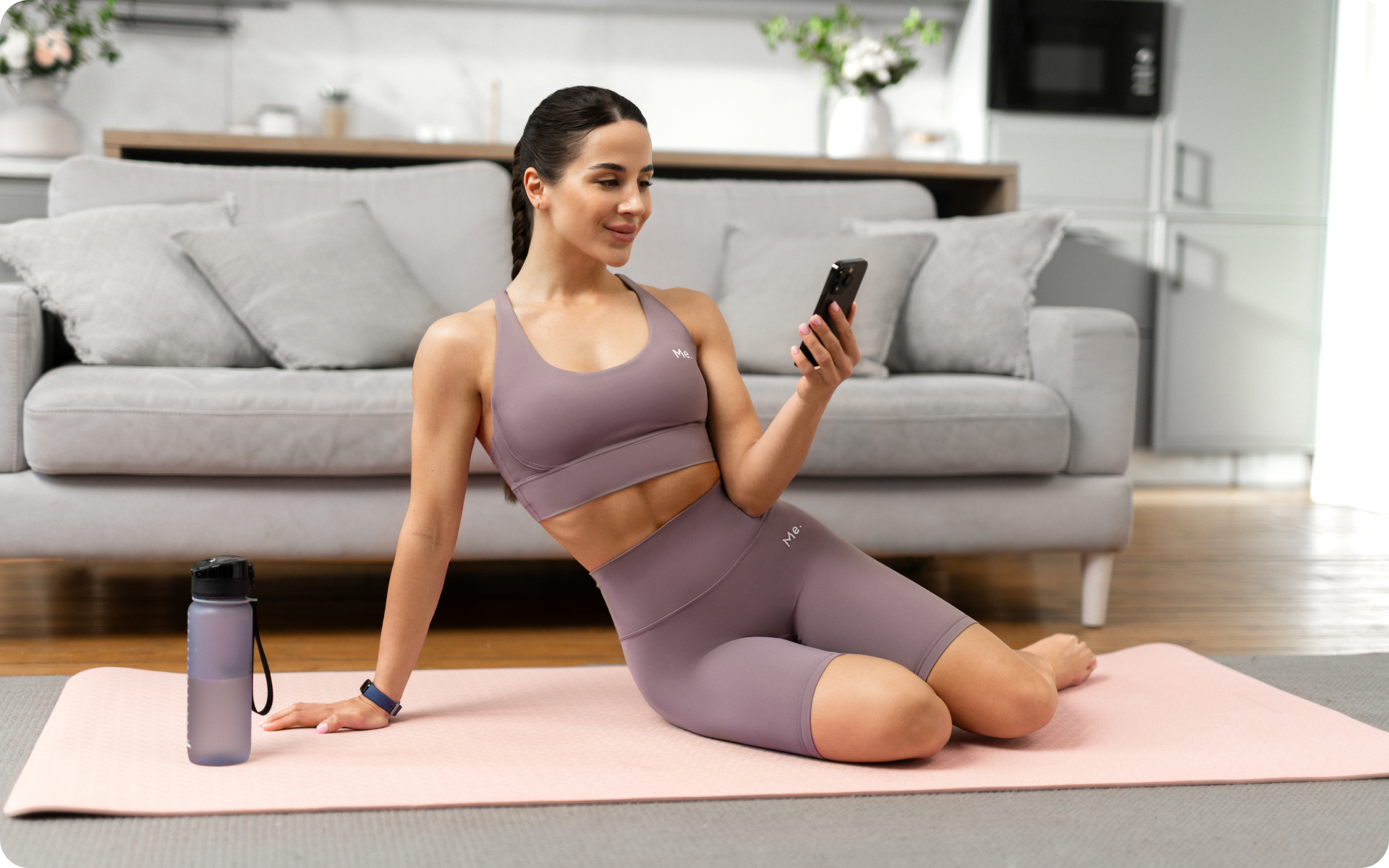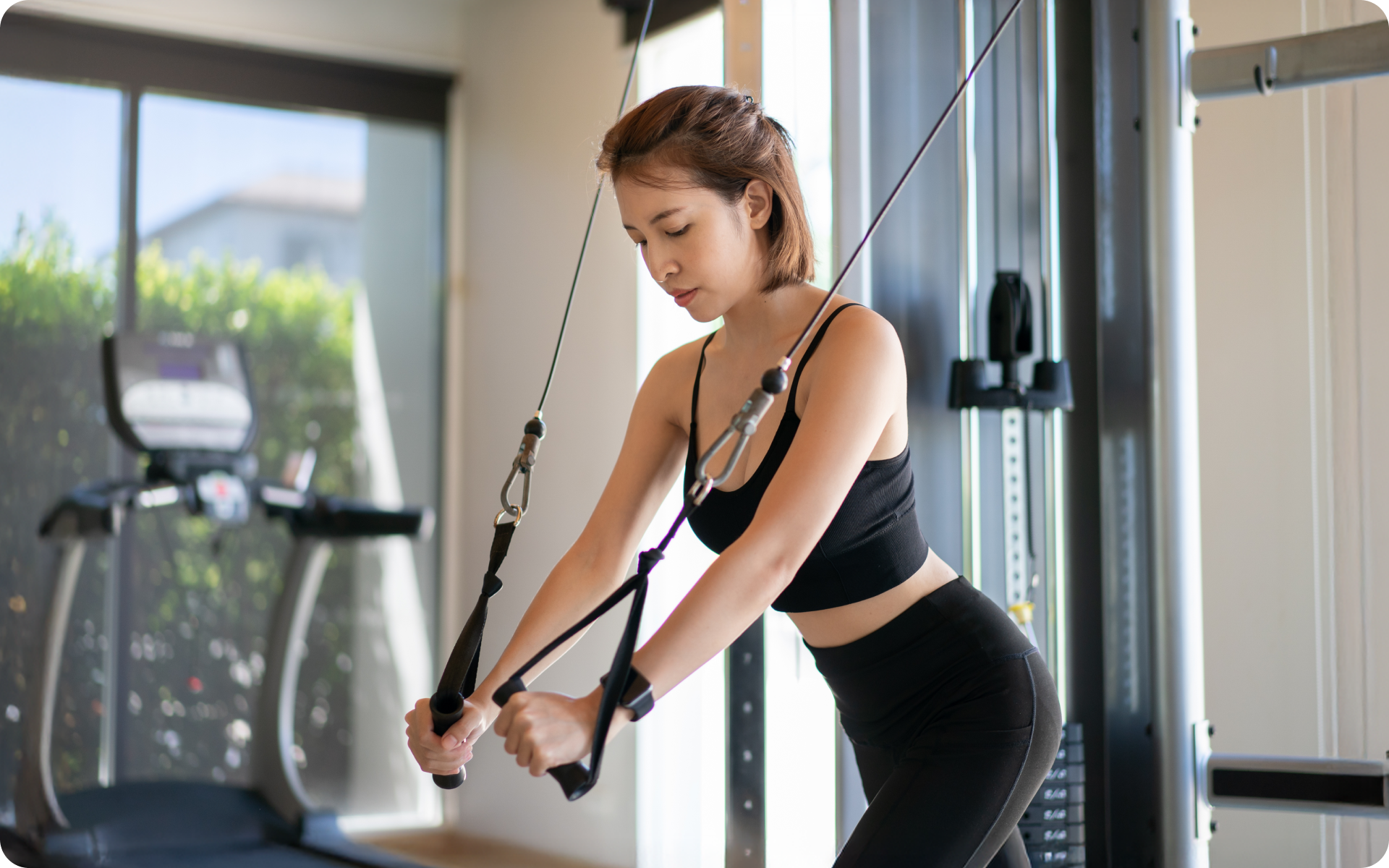Have you ever stared at your reflection in the mirror and wished those extra pounds would just vanish? If you have then believe me, you’re not alone.
Get your personalized
meal plan!
We all want to look more fit. A vibrant self is a path that we all want to explore. Imagine waking up with a great smile on your face, taking clothes you thought you would never wear, again out of your closet and putting them confidently. We all want to experience such days!
If your hectic routine hinders exercise, you should explore the world of High-Intensity Interval Training (HIIT). With HIIT, more calories are burned than with many other routines.
It is perfect for those who want to lose weight quickly. This article offers some practical tips to help you lose those extra pounds. By adopting these helpful practices, you will discover the best version of yourself.
Whether you’re a newbie who needs guidance or a regular gym goer, you can easily adjust this plan to fit your body needs.
What is HIIT?
High-Intensity Interval Training (HIIT) is a workout technique that incorporates alternating short periods of intense exercise with intervals of rest or less demanding activity (6).
HIIT aims to increase your heart rate through intense, powerful exercises and enable your body to work at its highest capacity. Appropriate rest intervals need to be taken to maintain the high intensity during work intervals.
These workouts are highly regarded for burning calories and boosting cardiovascular fitness. The number of calories burned during a HIIT session can vary due to factors such as workout duration, interval intensity, and personal fitness level.
Generally, a 20 to 30-minute HIIT session can result in greater calorie expenditure than longer cardio sessions due to its heightened intensity and the increased post-workout metabolic rate. Several studies have shown that an average-weight individual who engages in a 30-minute HIIT session can expect to burn approximately 250-400 calories (14).
When it comes to weight loss, progress is made by inches, not miles, so it’s much harder to track and a lot easier to give up. BetterMe app is your personal trainer, nutritionist and support system all in one. Start using our app to stay on track and hold yourself accountable!
How Many Calories Does a 30-Minute HIIT Run Burn?
The number of calories burned during a HIIT run can vary based on weight, intensity, and physical fitness level. HIIT is a cardio exercise that can be performed alternatively with short bursts of intense activity followed by lower-intensity recovery.
The main goal of this workout is to push your body to perform intense exercises for short intervals, resulting in an increased heart rate and calorie burn. This practice allows you to take shorter recovery periods to normalize your breathing.
Here are the basic steps for performing a 30-minute HIIT workout:
Workout Duration: 30 minutes
Try to maintain your maximum effort: this will help you achieve 80-85% of your maximum heart rate
Warm-Up (5 minutes):
Warm up your muscles and prepare your cardiovascular system for the upcoming intensity with a 5-minute brisk walk or light jog.
Run Interval (2 minutes):
Start by running at a fast pace for 2 minutes. Concentrate on your form, drive your arms, and maintain a steady breathing rhythm.
Active Recovery (1 minute):
Slow down to a light or brisk walk for 1 minute. Take advantage of this opportunity to relax and slightly lower your heart rate.
Repeat Intervals (10 rounds):
For the next 10 rounds, you should alternate between the following:
- Run fast (2 minutes): Run at a challenging pace (80-85% effort) for 2 minutes.
- Rest for (1 minute): Walk or lightly jog for 1 minute to recover and prepare for the next round.
- Cool down (5 minutes): Slow down gradually to a slow walk for approximately 5 minutes. This will help your heart rate return to normal and prevent muscle fatigue.
Notes: During this run interval, maintain your pace to reach 80-85% of your maximum heart rate. You can monitor this using a heart rate monitor or by checking your pulse.
Start with shorter sprint intervals (such as one minute) if you are new to HIIT or running, and gradually increase the time as your stamina increases. It has been observed that a person who weighs approximately 70 kg can burn approximately 250 to 400 calories in a single 30-minute HIIT session (14).
In addition, the calorie-burning impact extends beyond the exercise itself. After the workout, calories continue to be burned due to the EPOC effect (excess post-exercise oxygen consumption), which is more commonly called the after-burn effect (11).
How Can You Burn 1,000 Calories a Day with HIIT?
Your capacity to burn calories is affected by various factors, including:
- Your weight
- Physical fitness
- Gender
- Genetics
- Age
The outcomes of HIIT calorie-burning workouts can vary according to the time and intensity of the sessions. Here is a list of HIIT exercises you can include in your daily workout routine that will help burn 1,000 calories. It should be noted that burning 1,000 calories through exercise is very demanding, particularly for a beginner (13).
Jump Rope HIIT Workout
Dynamic Warm-Up (5-10 minutes):
Start with a vigorous warm-up to get your body ready. Spend 5-10 minutes on leg swings, arm circles, and light jogging.
Main HIIT Session:
- Jump Rope Intervals: 2 minutes of vigorous rope jumping (at maximum speed) with 30-45 second rests. Perform 10 to 15 rounds.
- Calories Burned: This HIIT jump rope workout can burn approximately 750-1050 calories in an hour. Remember that you are doing intense rope jumps.
Cool-Down:
Cool down with gentle walks and body stretches. Spend 5-10 minutes on this (1).
HIIT Cycling
Warm-Up (5-10 minutes):
Cycle lightly for 5-10 minutes indoors or outdoors.
Main HIIT Session:
- Cycle Intervals: Go intense for 1 minute, followed by 1 minute of easy cycling. Repeat this 10 to 15 times.
- Calories Burned: Typically, this HIIT cycling can burn 800-1000 calories in 90 to 120 minutes, based on factors such as individual characteristics, intensity, effort, and fitness level (4).
Cool-Down:
Cycle slowly for 5-10 minutes. Stretch your legs and lower back.
HIIT with Burpees
Warm-Up (5-10 minutes):
Spend 5-10 minutes on light cardio, such as jogging or jumping jacks.
Main HIIT Session:
- Burpee Intervals: Perform burpees for 45 seconds, then rest for 60 seconds. Repeat 12 times.
- Calories Burned: On average, this HIIT burpee workout will burn approximately 800-1000 calories in one hour, depending on effort and fitness.
Cool-Down:
Cool down with a walk and gentle stretches for the legs, core, and upper body. Spend 5-10 minutes on this.
Avoid doing HIIT every day to prevent injury or burnout. According to a research study that was published in the New York Times, daily HIIT without proper recovery can cause fitness plateaus and health decline due to the taxing nature of the workouts (15)
Read more: Rev Up Your Calorie Burn With HIIT Jump Rope Workouts: Benefits & Routines.
Can You Burn 500 Calories in a HIIT Workout?
Yes! A single HIIT calorie-burning 30-minute session can cause the body to burn 250- 500 calories (7). The fluctuating interaction between high-intensity exercises and active recovery helps maintain an elevated heart rate, which results in a substantial calorie burn.
By incorporating both cardiovascular and strength-based exercises into the routine, the overall effectiveness of the HIIT calorie-burning workouts is further enhanced.
Below are some effective HIIT exercises you can include in your routine:
- Running intervals
- Bodyweight circuit
- Cycling intervals
- Jump rope intervals
- Swimming intervals
- Burpees
- High knees
- Mountain climbers
- Sprints
- Rowing intervals
You must remember that proper form, adequate hydration, and individual differences may contribute to the actual calorie burn experienced during a HIIT calorie-burning session.
How Effective Is 30 Minutes of HIIT?
Research has shown that a 30-minute high-intensity interval training (HIIT) session can be remarkably effective and provide similar benefits to longer steady-state cardio workouts. This makes it an excellent choice for those who have limited time due to their busy schedules (2).
To efficiently target the main muscle groups in just half an hour, you can follow a circuit of light weights and high repetitions.
Incorporating this HIIT into your routine can enhance your muscular strength and endurance while also providing significant calorie and fat-burning advantages (9).
An ideal workout can include sets of various exercises, such as:
- Push-ups
- Squats
- Deadlifts
- Lunges
- Bicep curls
- Tricep dips
- Shoulder presses
- Bent-over rows
- Leg presses
Engaging in HIIT will enhance cardiovascular fitness and can boost metabolic rate. This can help with fat loss and in quite a short timeframe. However, it is essential to maintain proper form during HIIT calorie-burned workouts and gradually increase intensity levels to avoid overexertion.
Is 30 Minutes of HIIT a Day Enough to Lose Weight?
30 minutes of high-intensity interval training (HIIT) per day can absolutely produce positive results when you want to shed weight.
HIIT is an efficient method that involves alternating intense exercise bursts with short recovery periods. This increases the number of calories burned and accelerates the metabolism, resulting in fat loss. It’s important to also factor in rest days and lower-intensity workouts to enable proper recovery and progress (3).
To lose those excess pounds, there are two impactful 30-minute HIIT workout plans you can opt for:
Plan 1
- Perform 15 reps of caterpillars
- Execute 40 reps of mountain climbers
- Complete 15 reps of jump squats
- Perform commandos for a total of 15 reps
- Do 20 reps of reverse crunches
- Engage in tricep dips, ensuring you complete a set of approximately 15 reps
- Practice skaters. Do 20 full reps
- Finish with 15 pushups
Plan 2
- Start with a five-minute warm-up routine
- Proceed to perform four rounds comprising one-minute exercises. Repeat four times consecutively. The exercises include jumping jacks, squats, caterpillar workouts, push-ups, high knees movements, Russian twists, abs routines, and butt kick motions. Conclude each round with burpees.
- Finish the session by cooling down for five minutes
Combining these HIIT routines with a well-balanced diet, adequate sleep and rest can significantly improve your weight loss experience. In addition to increasing calorie burning, they can also help build muscle mass, resulting in overall improvement in fitness levels. You should try to maintain consistency if you want to achieve your desired weight loss objectives.
Want to build an attention-grabbing bubble butt, blast away fat that’s stored in all the wrong places, spring-clean your diet, turn back the clock on your skin, skyrocket your self-confidence and shatter your insecurities? Check out the BetterMe app and set this plan in motion!
What is the Difference between HIIT and Running?
When we discuss the number of calories burned by HIIT vs. running, there are some interesting pointers. Firstly, HIIT is an approach that focuses on short bursts of intense exercise followed by short periods of rest. It can increase the heart rate and burn calories, helping you lose weight (8).
Running is a steady-state cardio activity that can help you achieve your calorie reduction goals. If you opt for longer runs, this will burn many calories. However, the calories burned in a 20-minute HIIT session are typically more than in 20 minutes of running.
The reduced time factor makes HIIT quite popular among fitness enthusiasts. Therefore, when comparing running and HIIT, it should be acknowledged that both have some advantages. If you prefer running, this can enhance your cardiovascular endurance, but if you opt for HIIT, this can help you lose calories faster with lasting effects.
Factors such as fitness requirements and the time you have available can be used to help you choose an exercise regime. Integrating running or HIIT into your fitness regimen can help you lose weight and improve your overall health.
What is a Beach Body HIIT Workout?
The term “beach body” refers to a well-toned and attractive body. As the name suggests, these are exercises that are performed on the beach. Beach body HIIT workouts combine HIIT training principles to sculpt a lean, stunning body near the waves (12).
These workouts are quite popular and are known for their efficiency. The exercises in this regime are intense and can be completed in a relatively short period of time.
A beach body HIIT workout can cover sprints, jumping jacks, burpees, and mountain climbers. All of these exercises are performed at a fast pace with short breaks in between.
What are the Guidelines for Maintaining Overall Health through HIIT?
High-Intensity Interval Training (HIIT) involves brief bursts of vigorous activity and recovery periods. To ensure overall health when you engage in HIIT, particularly if you are a beginner, you should try following these steps:
- Start with a dynamic warm-up routine to adequately prepare your body
- Choose exercises that challenge you and suit your current fitness level
- Design intense exercise intervals that last approximately 30 seconds, followed by rest periods of approximately 1 minute
- Gradually increase the duration and intensity of your workouts over time
- Focus on maintaining proper form during exercise sessions to minimize the risk of injury
- End each activity with a cool-down period to help post-exercise recovery
It is best to have a strategy when trying to increase the HIIT calories burned. Workouts should be intense and variable, but you shouldn’t overlook your body’s needs. Try to:
- Plan your workouts, emphasizing different muscle groups during each session
- Alternate intense training days with scheduled rest days to prevent excessive strain on your body
- Listen attentively to signals from your body and adjust the intensity accordingly or take rest periods when necessary
- Ensure you get enough sleep as this aids optimal recovery after each workout (10)
- Incorporate stretching routines and flexibility exercises into your regimen
The HIIT Diet
You may encounter some tough days when doing HIIT, but this can make you stronger. The key is to always maintain hope and believe in yourself. Understanding that proper nutrition plays a crucial role in supporting energy levels and promoting swift recovery is also important. When starting a HIIT-specific diet, you should consider these tips (5):
- Include complex carbohydrates in your meals as they can help you sustain energy levels throughout physical exertion
- Incorporate lean protein sources into your diet plan as they can aid muscle repair and the growth process
- Prioritize healthy fats while avoiding excessive intake of processed foods that can significantly hamper your performance outcomes
- Stay well-hydrated before, during, and after each workout to boost your overall performance during high-intensity interval training bouts
- Consider a post-workout snack or meal to help the recovery process
- Pay attention to nutrient timings and try to align your meals with your workout sessions
- Remember that individual needs may vary, so it is strongly advised that you consult a healthcare professional or fitness expert before starting any new exercise or diet regimen
Read more: What To Eat Before A HIIT Workout According To The Experts.
The Bottom Line
When assessing the number of calories burned in an HIIT session, workout selection can make a huge difference. By alternating between intense bursts of exercise and short rest periods, HIIT offers a time-efficient and effective approach to fitness.
The beauty and adaptability of this workout is that it includes a large variety of exercises. You can have immense fun during these exercises without becoming bored. At the same time, their potential to maximize calorie burning and customized plans make them an appealing option for many people.
It engages both aerobic and anaerobic systems, which results in an elevated metabolism even after the workout has ended. It also emphasizes tailoring HIIT routines to individual fitness levels and goals. Whether performed through cardio activities or strength training, HIIT is a versatile tool for those who want to maximize calorie burn and achieve efficient results on their fitness journey.
FAQ
Is HIIT 3 times a week enough to lose weight?
Yes, doing HIIT 3 times per week can help you lose weight. It can increase calorie burning and speed up the metabolism by switching short bursts of vigorous activity with shorter rest periods.
What exercise burns the most fat in 30 minutes?
Burpees, box jumps, squat jumps, jumping jacks, jumping rope, boxing/speed bag punching, sprinting, and running stairs are all recommended HIIT exercises for burning fat in 30 min.
What are the disadvantages of HIIT training?
High-Intensity Interval Training (HIIT) has potential disadvantages, including the possibility of injury and overtraining. This makes it inappropriate for some people. You should approach HIIT with caution and ensure it suits your needs and abilities.
DISCLAIMER:
This article is intended for general informational purposes only and does not serve to address individual circumstances. It is not a substitute for professional advice or help and should not be relied on for making any kind of decision-making. Any action taken as a direct or indirect result of the information in this article is entirely at your own risk and is your sole responsibility.
BetterMe, its content staff, and its medical advisors accept no responsibility for inaccuracies, errors, misstatements, inconsistencies, or omissions and specifically disclaim any liability, loss or risk, personal, professional or otherwise, which may be incurred as a consequence, directly or indirectly, of the use and/or application of any content.
You should always seek the advice of your physician or other qualified health provider with any questions you may have regarding a medical condition or your specific situation. Never disregard professional medical advice or delay seeking it because of BetterMe content. If you suspect or think you may have a medical emergency, call your doctor.
SOURCES:
- 5 of the Quickest Workouts That Burn 1,000 Calories — Fast! (n.d., blackdoctor.org)
- 7 Benefits of High Intensity Interval Training (HIIT) (2023, healthline.com)
- 30 MINUTE HIIT WORKOUTS FOR FAT LOSS THAT ACTUALLY WORK! (2021, borntough.com)
- Burning 1000 Calories: 7 Ways to Do It + How Long It Takes (n.d., fitbod.me)
- Fuel Your Intensity: Nutrition tips for High Intensity Interval Training (n.d., thesporting.blog)
- How Many Calories Does a 30-Minute HIIT Workout Burn? (n.d., yurielkaim.com)
- How Many Calories Does a HIIT Workout Burn? The Ultimate Guide (2023, medicalhealthauthority.com)
- HIIT vs Running: What’s Better For Weight Loss and Endurance? (2021, gym-pact.com)
- Is 30 mins enough? (n.d., placesleisure.org)
- Sleep for muscle recovery: Why it matters and tips to sleep better (2023, betterup.com)
- The Afterburn Effect: Excess Post-Exercise Oxygen Consumption (n.d., experiencelife.lifetime.life)
- The 10 Best Beachbody Workouts of 2023 (2022, verywellfit.com)
- The 1000-Calorie Workout – Exercises That Burn 1000 Calories A Day (2023, stylecraze.com)
- This 30-minute HIIT workout burns more calories than running, according to research (2022, fitandwell.com)
- Too Much High-Intensity Exercise May Be Bad for Your Health (2021, nytimes.com)

